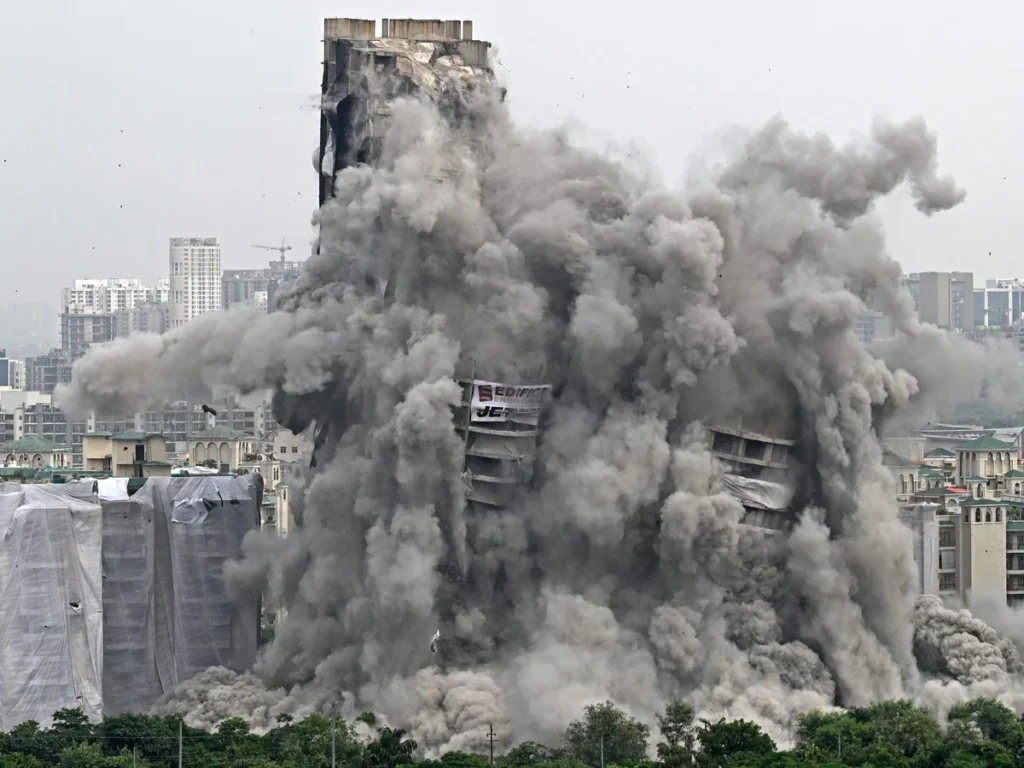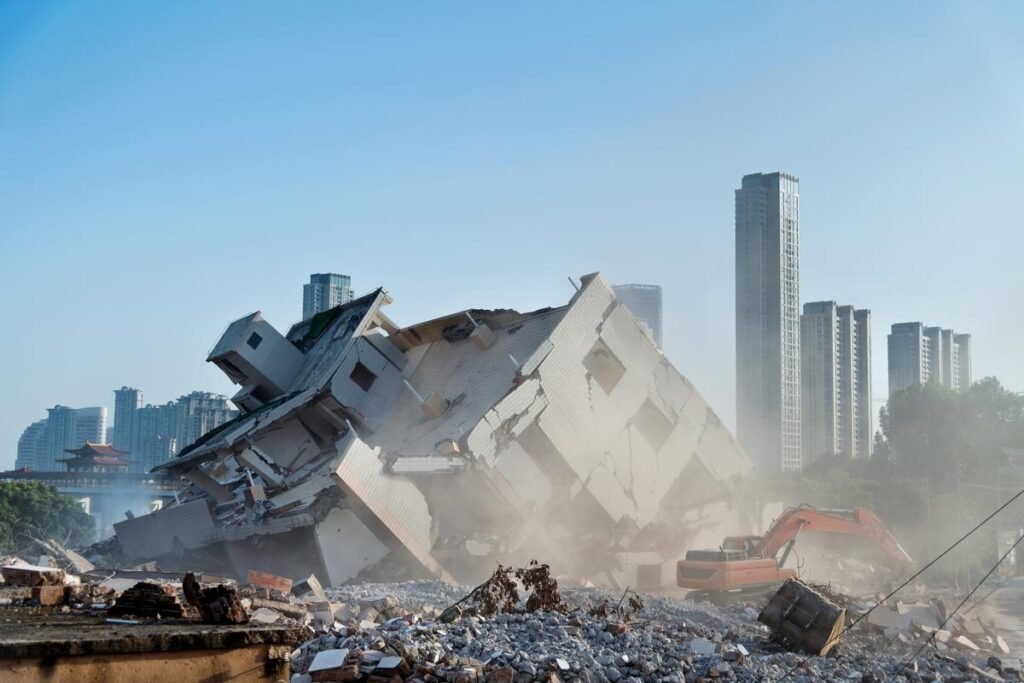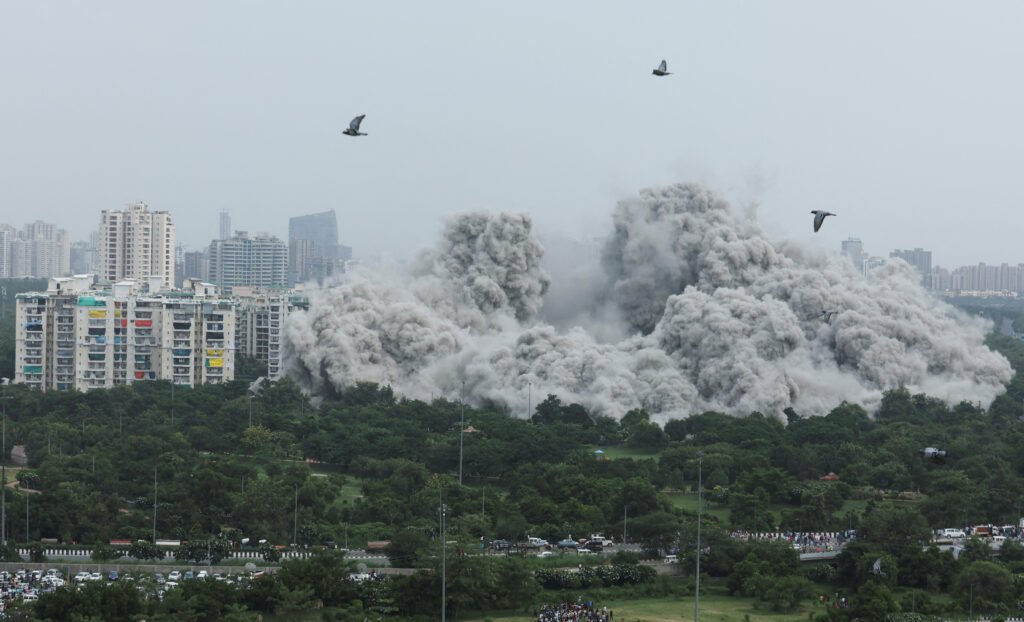

The issue of illegal building construction is rising rapidly in cities like Nallasopara. Builders construct multi-story apartments without proper permissions and sell them at affordable prices, attracting middle-class families dreaming of their own homes. However, when the authorities discover these illegal constructions and order their demolition, it is the residents who suffer the most. Their dreams are shattered in an instant, and they are forced to live on the streets. This blog sheds light on the different aspects of illegal building demolitions and the displacement of innocent residents.
1. Rise of Illegal Constructions
In fast-growing areas like Nallasopara, the construction of illegal buildings has become a common practice. Builders, often in collusion with local authorities, bypass legal approvals and construct multi-story buildings. These apartments are sold to unsuspecting buyers at reasonable prices, making it seem like the perfect opportunity for families to own a home.
Unfortunately, these constructions are often discovered by municipal authorities much later. Once identified, demolition notices are issued, leaving residents with little time to react. The rise of such illegal constructions not only affects urban planning but also creates a cycle of suffering for families who invest their life savings in these properties.
2. Impact on Residents: Dreams Shattered in an Instant
When an illegal building is demolished, it is not just bricks and concrete that fall; it is the dreams and hopes of countless families. Residents, who believed they had secured a stable future, suddenly find themselves homeless. With no alternative housing provided, many are forced to live on the streets or rely on temporary shelters.
The emotional toll on these families is immense. Children lose their place of study, elders lose their comfort, and breadwinners face the daunting task of rebuilding their lives from scratch. The lack of awareness about the legal status of their homes turns innocent buyers into victims, highlighting the need for stricter regulations and better public awareness.
3. Legal Loopholes and Builder Irresponsibility
One of the major reasons behind the rise of illegal buildings is the presence of legal loopholes. Builders exploit these gaps, often using temporary permits or misleading documentation to continue construction. By the time the authorities step in, the building is already occupied by families unaware of the building’s illegal status.
Builders usually escape the consequences, while residents are left to bear the brunt of the demolition. This irresponsibility highlights the need for stronger laws, stricter monitoring, and accountability for builders who engage in such practices. Without these reforms, innocent families will continue to suffer while the real culprits walk free.
4. Government Action and Delayed Justice
While the government takes action against illegal buildings by demolishing them, the justice system often falls short in protecting the rights of the displaced residents. Demolition drives are conducted without providing adequate notice or alternative housing, leaving families in distress.
Delayed justice further complicates the issue. Residents often approach the courts to challenge demolition orders, but the lengthy legal process rarely results in favorable outcomes. This lack of timely intervention underscores the need for a more humane approach to tackling illegal constructions.
5. Social and Economic Consequences
The demolition of illegal buildings has far-reaching social and economic consequences. Families who lose their homes also lose their investment, pushing them into financial instability. Many have to take loans to find new housing, while others struggle to meet their daily needs.
Socially, the displacement creates instability within communities. Children are forced to change schools, families lose their sense of security, and elderly residents face health challenges due to stress and lack of shelter. The economic burden and social disruption highlight the need for comprehensive rehabilitation programs for affected families.
6. Role of Authorities: Prevention vs. Cure
The role of authorities in preventing illegal constructions is crucial. Unfortunately, action is often taken only after the buildings are fully constructed and occupied. This reactive approach harms innocent residents rather than addressing the root cause.
To prevent future demolitions, authorities must implement stricter monitoring during the construction phase. Regular inspections, public awareness campaigns, and easy access to information about legal construction statuses can help potential buyers make informed decisions and avoid falling victim to such scams.
7. The Need for Rehabilitation and Support
While demolishing illegal buildings may be necessary for urban planning and safety, it should not come at the cost of innocent lives. The government must implement rehabilitation programs that provide temporary housing, financial assistance, and legal support to displaced families.
NGOs, social organizations, and community groups can also play a vital role in supporting affected residents. By raising awareness, advocating for policy changes, and providing on-ground support, society can work towards ensuring that no family is left homeless due to the negligence of builders and the system.
Conclusion:
Additionally, Illegal building demolition is not just a matter of urban development; it is a social crisis that affects the most vulnerable sections of society. While strict action against illegal constructions is necessary, it must be balanced with compassion and support for the displaced. Through better policies, stronger accountability, and community support, we can ensure that families are protected from the devastating impact of illegal building demolitions.





Leave a Reply